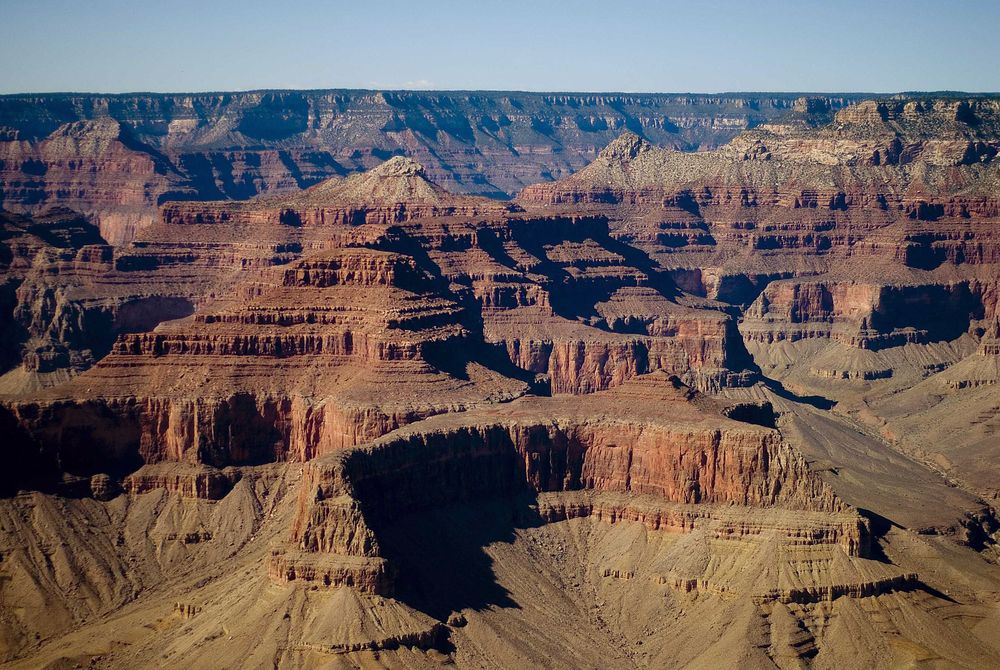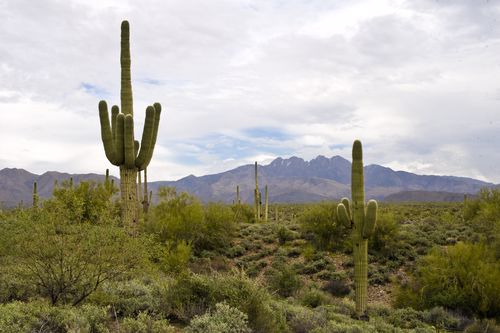

Route 66 is one of the most historic, well-known and interesting roads in the U.S. Perhaps unsurprisingly then, Route 66 is also close to many of the country's best national parks, monuments and sites of interest.
From nature lovers to history buffs to the generally curious, the national parks located up and down Route 66 have something that will appeal to bikers of all stripes. You might already recognise a few of the names, which include the Grand Canyon and the home of President Abraham Lincoln.
What is the US National Park Service?
The National Park Service (NPS) is an agency of the U.S. federal government within the U.S. Department of the Interior. Congress created the service in 1916 to reorganise federal land holdings such as monuments and smaller parks, but has since grown considerably.
The agency has a dual mandate: to preserve the ecological and historical integrity of the parks it manages; to make these parks available and accessible for public use and enjoyment.
At the end of World War II, Americans flocked to the available parks and overburdened the entire system. So in 1956, the NPS implemented a 10-year initiative named Mission 66 that greatly expanded the park's services in time for its 50th anniversary in 1966.
In 1999, Congress passed an act creating the The National Park Service Route 66 Corridor Preservation Program to provide guidance and technical assistance for the preservation, restoration and rehabilitation of historic Route 66 properties. More than 100 projects have received assistance from this program, all which will help keep this widely celebrated highway maintained for years to come.
National Parks within a 30-mile radius of Route 66
Among the many national parks along Route 66, some are closer than others. These parks are all within a short ride from the main highway.
Petrified Forest National Park
Located in the State of Arizona, the Petrified Forest National Park is a site to behold. Part of the Painted Desert, this uniquely strange landform contains the fossilised remains of an entire forest that's been sculpted and shaped by erosion and time. Scientists have used radiometric dating to determine parts of the park, such as The Black Forest Bed, are approximately 213 million years old.
Petroglyph National Monument
Located in the state of New Mexico, Petroglyph National Monument features designs and sacred symbols carved into stone by people using a stone chisel and a hammerstone. While many of these petroglyphs provide an impressive cultural record of the Pueblo people who inhabited the area from around 500 C.E. to 1300 C.E., there are some petroglyphs that date as far back as 2000 B.C.E.
Sunset Crater Volcano National Monument
Created by a huge eruption around 1085 C.E., Sunset Crater Volcano National Monument in Arizona is an impressive natural formation. While hiking to the summit is not permitted, you can still take a self-guided loop trail at the base, which skirts the Bonita Lava Flow.
And, while it's not a national park, the Barringer Crater, formerly known as the Canyon Diablo Crater, is not too far from Sunset Crater. However, unlike the volcanic history of Sunset Crater, the Barringer Crater formed as the result of a massive meteorite impact 50,000 years ago. Many consider this the best-preserved meteorite crater in the world.
Lincoln Home National Historic Site
U.S. history buffs can stop in Springfield, Illinois to visit the home of Abraham Lincoln, the 16th U.S. president. This site offers visitors the chance to experience what life was like for The Great Emancipator in 1850s Springfield before he was elected president. The park boasts a four-block neighbourhood with twelve historic structures and many key points of interests.
Ulysses S. Grant National Historic Site
Similarly, the Ulysses S. Grant National Historic Site in St. Louis, Missouri offers a view and insight into Ulysses S. Grant, the 18th American president. A general for the Union Army, Grant was instrumental in winning the U.S. Civil War. This site contains Grant's homestead, White Haven, along with numerous outbuildings, on its 10-acre parcel.
National Parks within a 100-mile radius of Route 66
Although these are a little further out than the parks within 30 miles of Route 66, these parks are more than worth the extra time it takes to visit them.
Pea Ridge National Military Park
Military enthusiasts should be sure to check out Pea Ridge in Arkansas, one of the most well-preserved Civil War battlefields. A pivotal turning point during the war, this 4,300-acre site commemorates the more than 23,000 soldiers who fought and died in America's bloodiest war.
Grand Canyon National Park
One of the crown jewels of the NPS, the Grand Canyon in Arizona, might be the best known landmark on the list. Considered a Natural Wonder of the World, the Grand Canyon National Park stretches for miles, offering stunning vistas of its beautiful layered bands of colourful rock that reveal millions of years of geologic history.
Joshua Tree National Park
Named for the Joshua trees native to the area, this national park encompasses nearly 750,636 acres of land, including nearly half a million acres of designated wilderness. Located in southern California, the park straddles the Mojave Desert and the Colorado Desert, where the two distinctly different ecosystems meet. Home to a wide variety of unique native animals and plant life, including its namesake, the Joshua tree, the park is also a popular observing site for amateur astronomy and stargazing.
Montezuma Castle National Monument
An enduring legacy of the Sinagua culture, Montezuma Castle is one of the best preserved cliff dwellings in North America. People of the Sinagua carved this 20-room structure into a towering limestone cliff more than 800 years ago. Stop by to see how people lived in the harsh unforgiving desert centuries ago.
If you're ready to explore the parks and monuments along Route 66 yourself, book a tour with us today!







